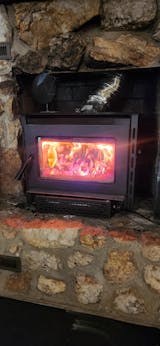Ashley Hearth AW1820E EPA Certified 1,200 sq. ft. Wood Stove Insert with Blower New
Manufacturer: US Stove
SKU: AW1820E
QTY
or
(888) 999-1522
$ 1,009.00

This item ships for free. Freight shipments include liftgate at no additional charge.
In Stock
Please allow 1-3 business days for processing
Manufacturer Direct Shipping
Extended Warranty
Factory Warranty
- All replacement parts are covered for 1 year from the date of purchase. The integrity of the firebox itself has a limited lifetime warranty.
Extended Warranties
-
Extends factory warranty to 2, 3, or 5 total years
-
Covers functionality issues for 2, 3, or 5 years
-
Local repair options always available
-
Free replacement if repair is not possible
-
No deductibles or hidden fees
-
Full parts and labor coverage
$0
(Included)
- All replacement parts are covered for 1 year from the date of purchase. The integrity of the firebox itself has a limited lifetime warranty.
(Details)
-
Extends factory warranty to 2 total years
-
Covers functionality issues for 2 years
-
Local repair options always available
-
Free replacement if repair is not possible
-
No deductibles or hidden fees
-
Full parts and labor warranty
(Details)
-
Extends factory warranty to 3 total years
-
Covers functionality issues for 3 years
-
Local repair options always available
-
Free replacement if repair is not possible
-
No deductibles or hidden fees
-
Full parts and labor warranty
(Details)
-
Extends factory warranty to 5 total years
-
Covers functionality issues for 5 years
-
Local repair options always available
-
Free replacement if repair is not possible
-
No deductibles or hidden fees
-
Full parts and labor warranty







































